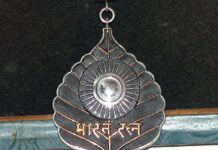What are Loans?
Foremost, you need to know the definition of a loan. A loan is an amount that you receive from a bank or any financial institution in exchange of future repayment of the Principal, with Interest. The principal amount is what you borrowed, and the interest is the amount charged for receiving the loan. Loans generally fall in 2 categories depending on the security –
Secured Loans –
Loans that are protected or covered by an asset. It involves pledging an asset (such as a car, boat or house) as collateral for the loan. They are the best way to acquire large amount of money at a time. Examples of secured loans are –
– Mortgage
– Home Equity Line of Credit
– Auto Loan (New and Used)
– Boat Loan
– Recreational Vehicle Loan
Unsecured Loans –
These are the opposite of secured loans. If the borrower doesn’t pay back the unsecured loan, the lender doesn’t have the right to take anything in return, which is why the interest rates are considerably higher.
Examples of unsecured loans are –
– Credit cards
– Personal lines of credits
– Student loans
– Personal (signature) loans
– Some house improvement loans
Types of Loans –
- Personal Loans – A personal loan is a kind of unsecured loan that is taken to meet the current financial needs of an individual. In this kind of loan, an individual does not pledge any collateral or security.
- Commercial Loans –This is a debt-based funding arrangement that is undertaken between a business and a financial institution. Commercial loans are generally used to fund major capital expenditures.
- Subsidized Loans – These kinds of loans are generally availed by undergraduate students who need financial assistance for their educational expenses. These loans do not accrue interest while the student is studying.
- Demand Loans –This is a rare type of loan and generally availed by businesses. As per the agreement of this kind of loan, the lender can repay the loan amount in full at any time.
Types of Loans – Advantages & Disadvantage –
The world of banking and loans is a great opportunity for financial institutions like banks, but due to some isolated incidents, financial lending gets a bad name. Bad loans and frauds in banks have tainted the banking profession, but by and large, you will find that loans are a lucrative financial product for both the lender and the borrower.
Advantages –
- With bank loans, you only need to worry about making your regular installment payments on time.
- Banks don’t usually monitor how you use your loan as long as you make your payments on time, so you can invest it however you want.
- Bank loans are usually the cheapest option. The lower interest rates of banks will definitely save you money.
- Banks require borrowers to pay only the principal and interest amount on a loan so that one retains all the business profits.
- When you use a bank loan for business reasons, the interest one pays on the loan is a tax-deductible expense.
Disadvantages –
- Some bank loans require some form of collateral, startups and existing businesses without any assets can find it difficult to get their loan applications approved.
- If these borrowers choose to go for unsecured loans, they are hit with higher interest rates.
- Those who fall behind on payments face the prospect of having their assets seized.
- Even if you manage to make late payments, your bank could still report you to credit bureaus and that negatively affects your credit score.
- With a lower score, obtaining loans in the future becomes difficult.
- If you get a bank loan with a variable interest rate, the rate changes with market conditions. This makes it difficult to determine the exact amount of future payments.
Types of Loans – Grim Facts –
In India, loan frauds typically refer to cases where the borrower intentionally tries to deceive the lending bank and does not repay the loan. Listed below are such happenings that India suffers from –
- India’s Liquor Czar Vijay Mallya, owes over Rs. 9,000 crore to IDBI Bank and several other banks.
- Nirav Modi orchestrated a bank fraud by illegally obtaining Letters of Understanding (LoUs) and Foreign Letter of Credits (FLCs) from Punjab National Bank. The fraud was to the tune of Rs. 11,300 crore and is India’s biggest fraud ever.
- In 2015, Jain Infraprojects defrauded Central Bank of India to the tune of Rs. 2 Billion.

















